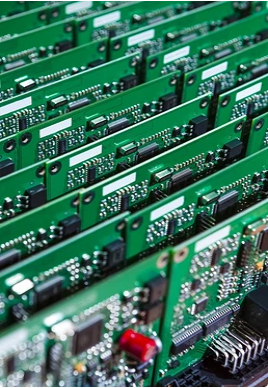Why does the IMC have formed effective welding in PCBA processing, but the parts still fall?
Shenzhen Honglijie has already had a number of articles on this website discussing the reasons and analysis of "electronic parts falling". The articles have always mentioned that most of the electronic parts are broken when they are dropped. The position of IMC (Intermetallic Compound), which means that when the part is soldered on the circuit board, the most vulnerable part of the overall structure including the part and the circuit board is the IMC, so it will break from the position of the IMC. However, almost all articles are It is pointed out that the IMC must be formed between the solder paste and the solder feet of the parts and the solder paste and the metal of the circuit board to be considered as effective soldering, and its solder strength can be ensured.
I believe that many friends will start to have questions when they read this. Doesn't the IMC generation means that the PCBA welding strength is good, then why is the position where the IMC layer is almost all on the IMC layer if it breaks after welding? Isn't this contradictory?

Q1. When the solder forms an IMC, it means that the soldering is effectively confirmed. The reason for the high PCBA soldering strength is the high strength of the IMC, so why does the solder joint break from the IMC place during the push-pull test, rather than from the picture " "Part solder" or "solder" is broken in the middle?
A1. First of all, the formation of IMC (Intermetallic Compound) in the soldering process of electronic parts is definitely one of the requirements for confirming good soldering and PCBA soldering strength, but many people may have misunderstood that the so-called "effective soldering" refers to whether soldering is possible or not. Good, but there is no guarantee that the destructive push-pull force it can bear will be stronger than the original welded two-end structure.
It is better to use cement and bricks to build the wall. Bricks are used to represent the metal plating of the solder pads of the circuit board and the solder feet of the parts, and the cement is equivalent to IMC, because IMC plays the role of connecting the solder pads and the solder feet.
When the middle of the two bricks is connected with cement and ruptured by external force, the first place to rupture is usually the cement surface instead of the brick, but then you will not doubt that I am clearly in the middle of the brick. It was coated with cement, why did it still crack from the cement place.
Therefore, the better the IMC is formed during the PCB welding process, the higher the PCBA welding strength, which refers to effective welding, and the IMC can withstand higher push and pull forces.
But how does this and the part always break from the IMC when it breaks due to external force? It's another matter. If a solder joint is broken, it is always possible to look for the weakest place, just as a dike break always starts from the weakest place.
Where the solder joints of PCB parts are broken depends on the maximum force that each place on the solder joints can withstand when subjected to external forces. Because IMC is a metal co-compound, that is, a product formed by combining two or more metals. The shear stress that it can withstand is generally weaker than that of pure metal, so the solder joints are almost always broken when they are broken. IMC layer. This is like a boy and a girl pulling a child, the child is always the most vulnerable link.